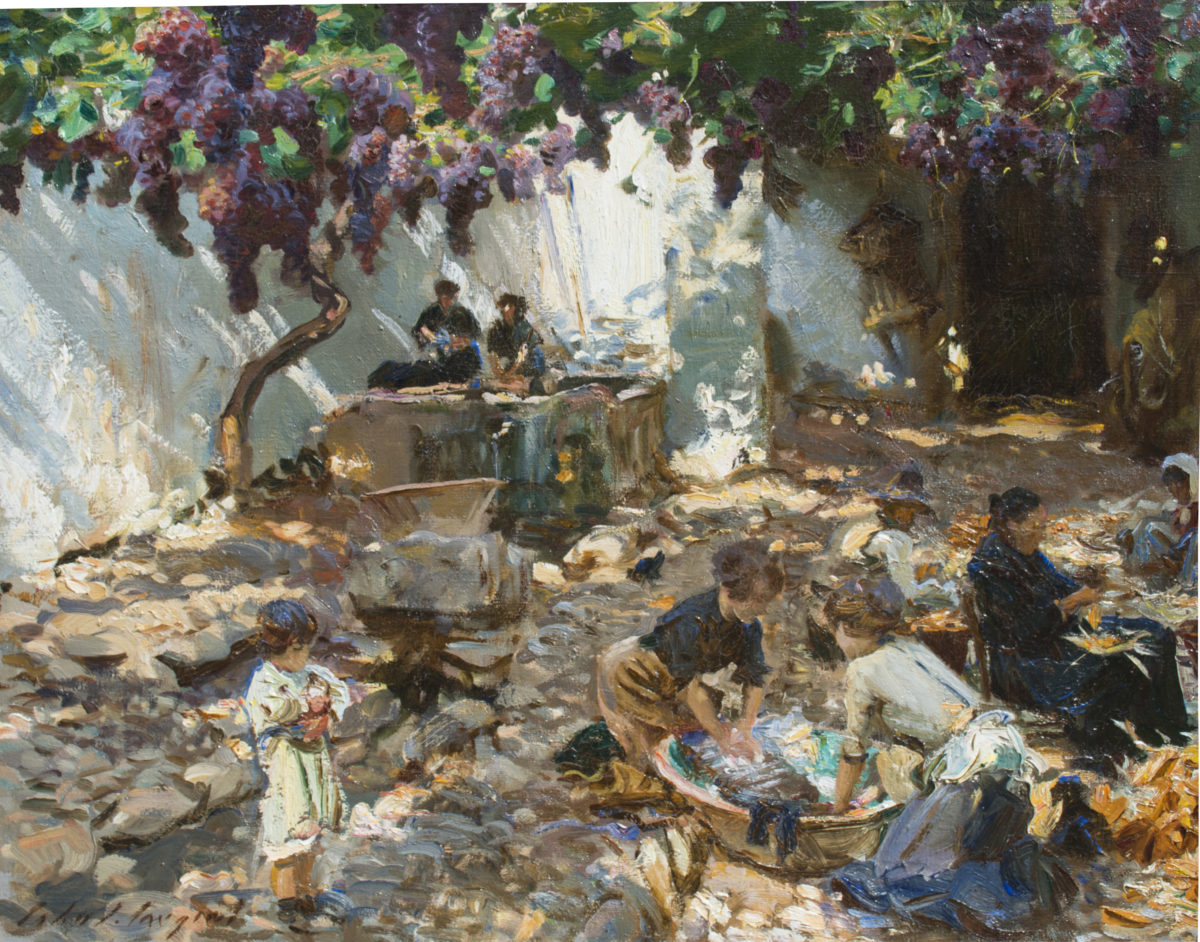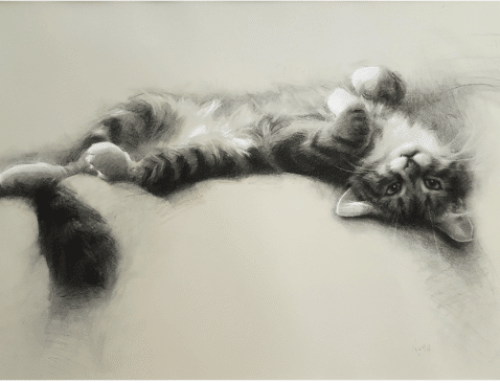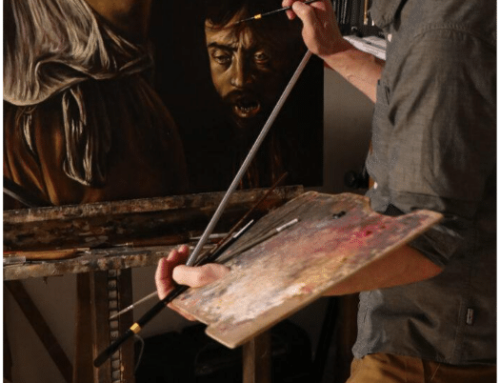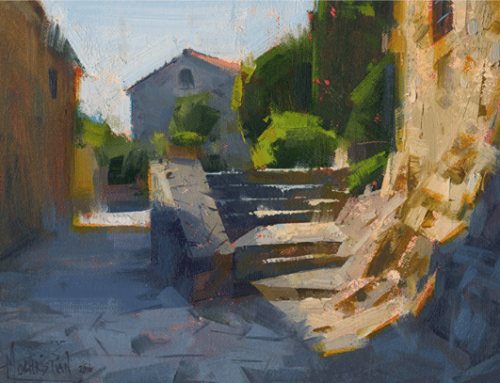All finished with its East Coast run, the exhibition “Sargent in Spain” is gearing up for its West Coast opening next month at the Fine Arts Museum of San Francisco, where it will be exhibited February 11 through May 14, 2023.
John Singer Sargent (1856–1925) loved Spain for its rich culture and lush landscapes and sun-drenched architecture. Sargent traveled there when he allowed himself some time off from the internationally successful career he’d spent decades establishing as portraitist to the wealthy elite of Europe and America. Though he completed many medium-sized oils there, he often chose watercolors, no doubt because they’d always be with him, ready whenever something he saw sparked the desire to paint. And boy could he SEE, and how.

John Singer Sargent, The Spanish Fountain, 1912. Graphite, watercolour and gouache on paper, height 533 mm, width 349 mm, 1912.
Sargent and Spain is the first exhibition to reveal the depth of his engagement and the intentional approach the artist adopted while in Spain. The show presents some 140 oils, watercolors, drawings, and never-before published photographs, several almost certainly taken by the artist himself.
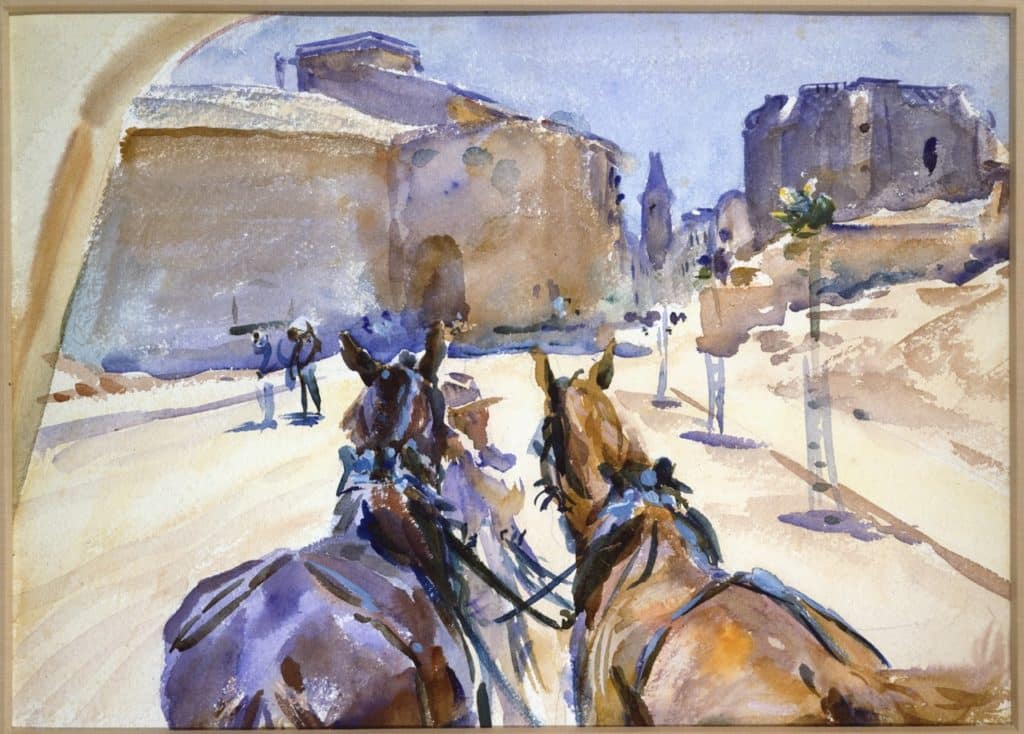
John Singer Sargent Driving in Spain, c. 1903 watercolor over graphite on paper framed: 50.8 x 64.14 cm (20 x 25 1/4 in.) image: 34.93 x 48.26 cm (13 3/4 x 19 in.)
“Sargent and Spain examines, for the first time, how Sargent engaged with that country, in all its diversity, and depicted it in paintings, drawings, and photographs,” says Kaywin Feldman, director of the National Gallery of Art.
“We are deeply grateful to Richard Ormond and Elaine Kilmurray, leading authorities on the artist and authors of the John Singer Sargent catalogue raisonné,” says Feldman, “who worked closely with Sarah Cash, associate curator of American and British paintings, on this presentation.”
Sargent’s work still astounds for its spectacular treatment of color, light, and shadow within compositions striking for their non-traditional yet somehow highly successful arrangements.
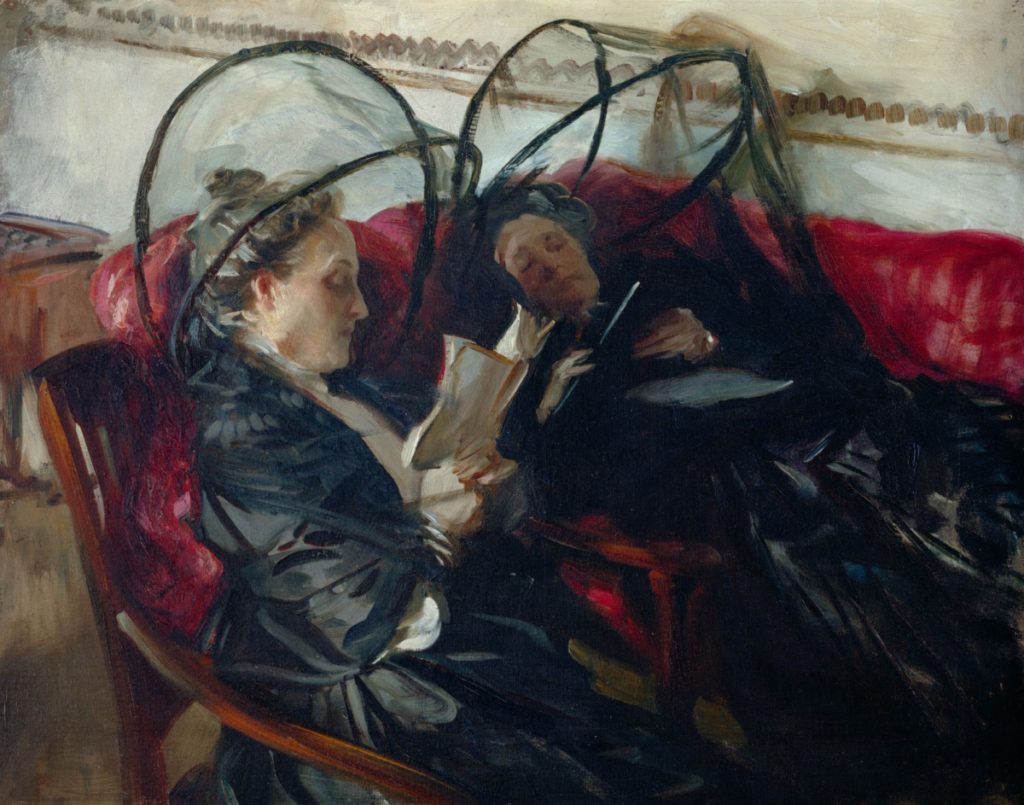
John Singer Sargent, Mosquito Nets, 1908 oil on canvas framed: 92.08 x 107.32 x 7.62 cm (36 1/4 x 42 1/4 x 3 in.) unframed: 57.15 x 71.76 cm (22 1/2 x 28 1/4 in.)
“Sargent’s influence on American painting is substantial,” said Larry Di Rita, Bank of America President, Greater Washington DC. “Bank of America is excited to support the exhibition of this vibrant collection of Sargent’s works.”
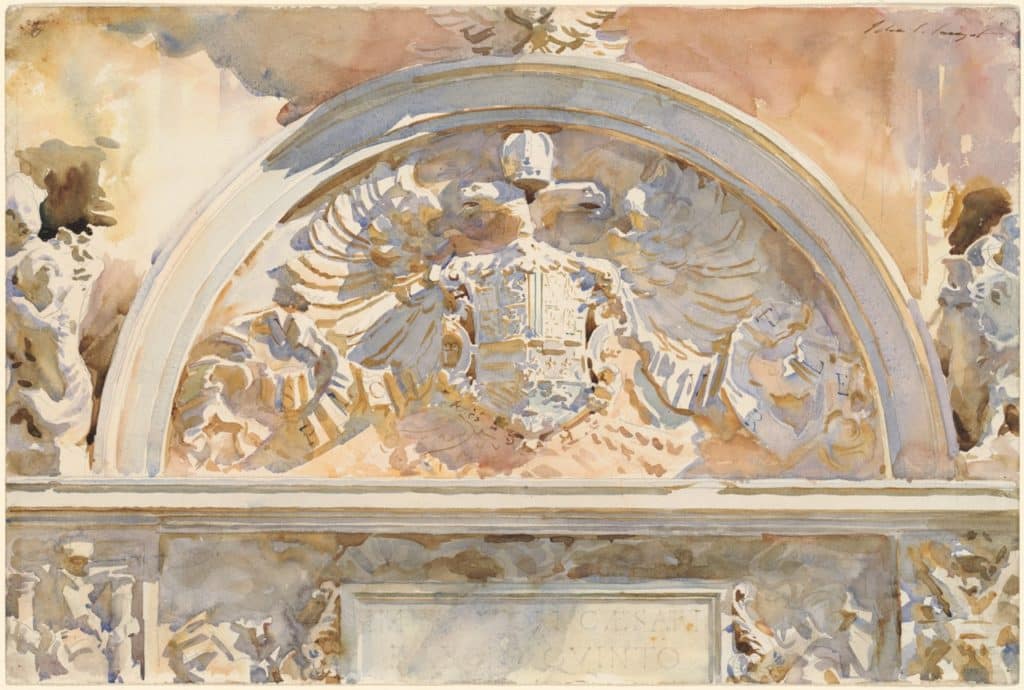 John Singer Sargent, Escutcheon of Charles V of Spain, 1912. Watercolor and graphite on white wove paper. 12 x 18 in. (30.5 x 45.7 cm). Purchase, Joseph Pulitzer Bequest, 1915. (15.142.11).
John Singer Sargent, Escutcheon of Charles V of Spain, 1912. Watercolor and graphite on white wove paper. 12 x 18 in. (30.5 x 45.7 cm). Purchase, Joseph Pulitzer Bequest, 1915. (15.142.11).
View the catalogue with high-resolution images (you have to click on them to see the higher res version) here.

If you love Sargent or want to know more, let Thomas Jefferson Kitts show you with an insider’s insight. Kitts is a renowned artist who teaches frequently, travels extensively, and maintains a distinguished exhibition history throughout the U.S. He is one of the few modern masters capable of demonstrating how Sargent’s brilliant eye and techniques can enhance your work. Check out the video SARGENT – TECHNIQUES OF A MASTER, in which Kitts shows why Sargent was Sargent and what that means for the artists working today who admire him.
Naples curators attribute a new quartet of works to Gentileschi
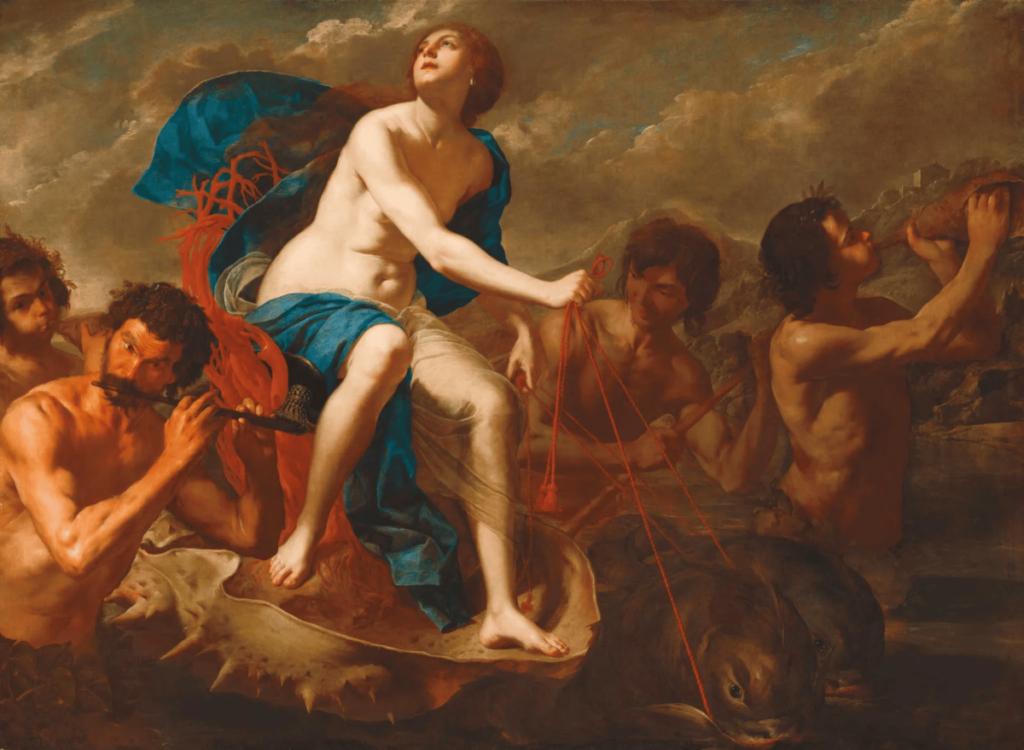
Triumph of Galatea (around 1650) was created by Artemisia together with Bernardo Cavallino, but the curators of a new exhibition attribute it to Artemisia because they have established that she was the “owner and creator” of the work.
National Gallery of Art, Washington, DC
Experts in Italian Baroque period art have given full attributions to four works by the brilliant artiest Artemisia Gentileschi loaned to them from public and private collections in the US and UK for that purpose. Gentileschi was one of the great painters of the period, though in her day her name and career were tarnished by a sexual assault trial that acquitted her mentor Agostino Tassi, a friend of her father’s whom she accused of raping her when she was his 18-year-old pupil.
Scholars have for more than a decade been busy establishing her rightful place in the history of art and both authenticating and rediscovering works by her hand. Read more about the newly attributed paintings here.

